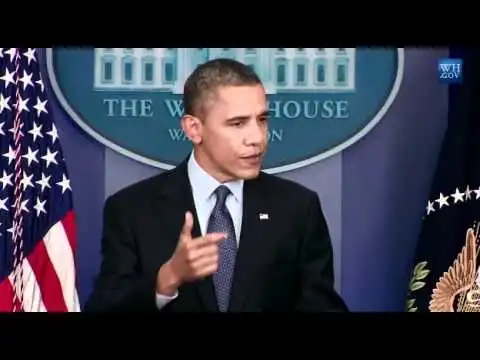President Obama Oblivious to the Truth About Unionized Government Payrolls

Clueless appeal to aid govt workers

President Obama evidently thinks the formula for U.S. economic success is for the share of the national income consumed by unionized government payrolls to grow and grow at the expense of private employee compensation, year after year, and decade after decade.
Just a little over two years ago, the U.S. Labor Department reported that, for the first time ever, a majority of unionized workers across America are now government employees. As recently as 1980, less than a third of all employees subject to “exclusive†union representation worked for the government. As of last year more than 42% of state and local government employees were under a union contract, and unionization in the state and local government sector was 5.5 times as great as in the private sector. That’s bad news for private employees, including union members whom union officials claim to represent, and for everyone else who pays taxes.
For many years now, Big Labor featherbedding and counterproductive work rules have sharply increased real taxpayer costs for compensation of state and local government employees. In fact, according to inflation-adjusted U.S. Commerce Department data, taxpayers’ aggregate real costs for compensation of state and local government employees soared by 29.5% between 1998 and 2008 – an increase roughly 50% greater than the total real growth for private-sector employee compensation.
From 2008 to 2010, the country experienced a severe national recession. Businesses whose revenues were plummeting had no choice but to cut back real compensation for private-sector employees by 5.2% over this two-year period. But largely because of the extraordinary legal privileges of government union bosses, state and local compensation fell by only a quarter as much as private-sector compensation, in percentage terms, from 2008 to 2010.
It is simply not sustainable for public payrolls to grow far faster than private payrolls during good economic times and then to shrink far less than private payrolls during bad economic times. Especially since the long-term growth in the demand for the major public employee-provided services is relatively slow. From 1998 to 2008, for example, the number of primary-and-secondary-school-aged children (ages five to 17) nationwide increased by 4.0%, less than a third of the overall population increase.
This is something Big Labor President Barack Obama appears not to understand at all. He put his ignorance on display last Friday in the White House press room, when he insisted that the U.S. “private sector is fine.†Just so no one misunderstood, the President added that, if Congress really wants to “move forward and put people back to work, what they should be thinking about is how do we help state and local governments.†(For more about the President’s comments late last week, see the link above.)
Thanks largely to the efforts of fed-up taxpayers, it appears that since the beginning of 2011 the relentless growth in the share of all U.S. income that is consumed by state and local government compensation has halted. Indeed, for the first time in many years unionized government payrolls are now, it appears, momentarily declining relative to private payrolls. But this seeming trend would have to go on for a long, long time to get the balance between America’s private and government sectors back to what it was as recently as the late 1990’s.
Experience indicates that will be very difficult to achieve. Especially as long as we have a President who thinks the formula for national economic success is for the share of the national income consumed by unionized government payrolls to grow and grow at the expense of private employee compensation, year after year, and decade after decade.

